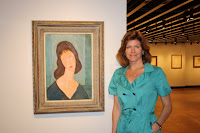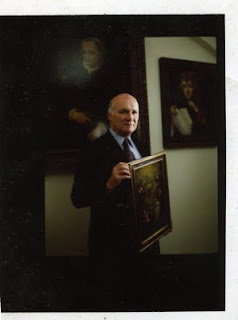Sunday, March 19, 2017 -  1970 UNESCO Convention,Antiquities; Looting; Smuggling; Collecting; Collections; iraq,ARCA lecturer,art crime lecture,illicit trafficking,smuggling,Syria
1970 UNESCO Convention,Antiquities; Looting; Smuggling; Collecting; Collections; iraq,ARCA lecturer,art crime lecture,illicit trafficking,smuggling,Syria
 No comments
No comments
 1970 UNESCO Convention,Antiquities; Looting; Smuggling; Collecting; Collections; iraq,ARCA lecturer,art crime lecture,illicit trafficking,smuggling,Syria
1970 UNESCO Convention,Antiquities; Looting; Smuggling; Collecting; Collections; iraq,ARCA lecturer,art crime lecture,illicit trafficking,smuggling,Syria
 No comments
No comments
Lecture: Criminals without Borders - The many profiles of the (il)licit antiquities trade.
For those interested interested in the realm of illicit trafficking who will be in Rome, Italy April 21, 2017 Lynda Albertson, ARCA's Chief Executive Officer will be giving a talk on "Criminals without Borders."
This one hour lecture, at 6:00 pm at John Cabot University will provide a brief overview of the profile of actors in the illicit art trade, giving examples of how those in the trade avoid detection and prosecution.
This presentation will discuss the motives of trafficking in art and antiquities, highlighting cases from source and conflict countries emphasizing that the trade thrives on commercial opportunity i.e., a means of dealing in high value commodities that are often poorly protected, difficult to identify and easy to transport across national boundaries.
Her presentation will examine specific case examples and will underscoring response mechanisms that work to proactively counter the illegal trade.
The discussion will highlight
--the interchangeable participants in the illicit antiquities trade
--varying motives/opportunities
--how connections through single interactions can form loosely based networks
Lynda Albertson is the CEO of ARCA — The Association for Research into Crimes against Art, a nongovernmental organisation which works to promote research in the fields of art crime and cultural heritage protection. The Association seeks to identify emerging and under-examined trends related to the study of art crime and to develop strategies to advocate for the responsible stewardship of our collective artistic and archaeological heritage.
Ms. Albertson, through her role at ARCA seeks to influence policy makers, public opinion and other key stakeholders so that public policies are developed and based on apolitical evidence, and which addresses art crime prevention and the identification of art crimes in heritage preservation initiatives.
In furtherance of that, Ms. Albertson provides technical, scientific and regional expertise to national and international organizations such as UNESCO, CULTNET, ICOM, in furtherance of ARCA's heritage preservation mission. For the past five years, Lynda has focused part of her work on fighting the pillage of ancient sites and trafficking of artifacts, particularly in the Middle East and North Africa, conducting research on the illicit trade in antiquities in MENA countries.
Ms. Albertson also oversees ARCA's inter NGO - Governmental engagement and capacity building in MENA countries in recognition of UN Security Council Resolution 2199, which among other provisions, bans all trade in looted antiquities from Iraq and Syria and encourages steps to ensure such items are returned to their homelands.
Tuesday, March 21, 2017
6:00 PM - 8:00 PM (CET)
Guarini Campus
Via della Lungara, 233










